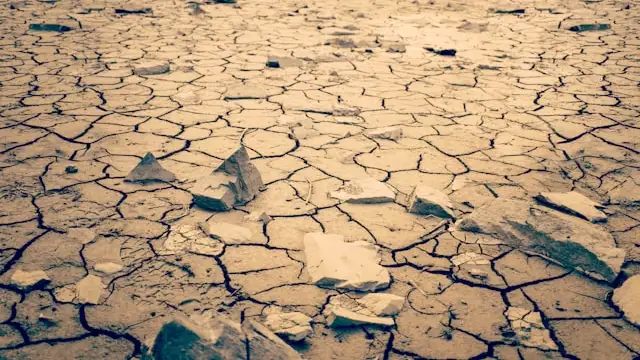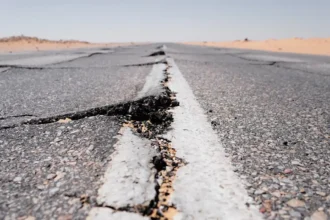A dangerous heatwave is affecting millions of people across India, with temperatures rising to alarming levels. According to the India Meteorological Department (IMD), many states are experiencing temperatures 3-5°C above normal during April 2025, creating serious health risks for vulnerable populations.
Cities in northern and central India have recorded extremely high temperatures, with many places reaching above 44°C. The heat is much worse than usual for this time of year, and experts warn it could continue until the end of April.
Cities Facing the Worst Heat
| City | Temperature (°C) |
|---|---|
| Prayagraj | 44.8 |
| Sultanpur | 44.8 |
| Jharsuguda | 44.7 |
| Gaya | 44.6 |
| Kanpur | 44.4 |
| Varanasi | 44.2 |
| Delhi Ridge | 43.3 |
The heat wave prediction from IMD suggests we could see 6-10 heat wave days between April and June. Delhi recently recorded its highest temperature for April in the last three years, reaching 42.1°C, according to Hindustan Times.
Why This Heat Is So Dangerous
Harvard researchers studying heat stress have found that the danger level for humans might be lower than previously thought. They suggest changing the heat danger threshold from 35°C to just 31°C, which means many more people are at risk than we realized.
When scientists talk about heat danger, they use something called wet-bulb temperature. This measures both heat and humidity together, which shows how the heat actually feels on your body. Think of it like how your skin feels when it’s both hot and sticky, not just what a regular thermometer shows.
The combination of high heat and high humidity makes it harder for your body to cool down by sweating. When this happens, you face serious health risks like heat stroke, which can be life-threatening.
Who Is Most At Risk
According to the International Confederation of Midwives, pregnant women face special dangers during extreme heat. Your body is already working extra hard when pregnant, and the added stress from heat can cause serious problems.
Other high-risk groups include older adults, young children, and people with health conditions like heart disease or diabetes. Those who work outdoors are also facing dangerous conditions.
Also Read: Extreme heat in India reduces home-based women’s productivity by up to 30%, threatening livelihoods and health in 2024’s hottest year. Read Here.
Other Weather Problems Happening Now
While some parts of India face extreme heat, other regions are dealing with different weather problems. Flash floods hit Ramban district in Jammu and Kashmir on April 20, 2025, showing how climate change is causing various extreme weather events.
The International Centre for Integrated Mountain Development (ICIMOD) reports a significant decline in snow persistence in the Ganga and Indus river basins. This means less snow is staying on mountains throughout the year, which affects water supplies for millions of people.
Northeast India can expect widespread rainfall and thunderstorms in the coming week, with strong winds reaching 50-60 kmph in Assam and Meghalaya on April 27, according to the IMD.
How Cities Are Responding
Many city governments are taking quick action to help people stay safe during the heatwave. According to the Economic Times, Delhi has launched its 2025 Heat Action Plan.
Delhi’s plan includes 3,000 water coolers serving 400,000 people across the city. They’ve also set up an early warning system for heatwaves and created special green roofs at bus stops to provide shade.
The plan uses Aapda Mitra volunteers – these are specially trained local people who help during disasters. They can check on vulnerable neighbors and guide people to cooling centers when needed.
According to the Times of India, the Odisha government has changed school timings for classes 1 to 12, now running from 6:30 a.m. to 10:30 a.m. in April 2025. This protects about 2 million students from the worst heat of the day.
More Help Coming Soon
The National Disaster Management Authority (NDMA) plans to create 300 more city-level heat action plans, according to Business Standard. These plans will help more cities respond better to rising temperatures.
The success story of Ahmedabad shows how effective these plans can be. Their Heat Action Plan has saved about 1,000 lives since it started in 2013, according to the Council on Energy, Environment and Water.
How You Can Stay Safe
With temperatures expected to remain dangerously high until Tuesday, you need to take special care to protect yourself and your family.
- Drink plenty of water, even if you don’t feel thirsty
- Stay indoors during the hottest part of the day (11 a.m. to 4 p.m.)
- Wear light, loose clothing that covers your skin
- Check on elderly neighbors and relatives regularly
- Watch for signs of heat illness: dizziness, headache, confusion
Delhi’s air quality is currently at 239, falling in the “poor” category. This means the air contains pollutants that can irritate your lungs and make breathing more difficult, especially when combined with heat.
Climate Change Connection
Scientists point to climate change as a major reason for these increasingly extreme weather patterns. Global warming is making heatwaves more frequent, more intense, and longer-lasting.
The combination of problems – from extreme heat to flash floods and declining snow in mountain regions – shows how climate change affects different areas in different ways, but all are connected.
As temperatures continue to rise globally, scientists warn that these extreme weather events will become more common, making it even more important for communities and individuals to prepare.
Looking Ahead
The current heatwave is expected to continue affecting northwest and central India until April 30. You might see some relief after that, but the summer season is just beginning.
With climate patterns changing, preparing for extreme heat is becoming a necessary part of life in many parts of India. The heat action plans being developed across the country will be crucial for protecting public health.
As you move through the coming weeks, stay informed about local weather forecasts and follow safety guidelines. The actions you take today could save lives – including your own.











